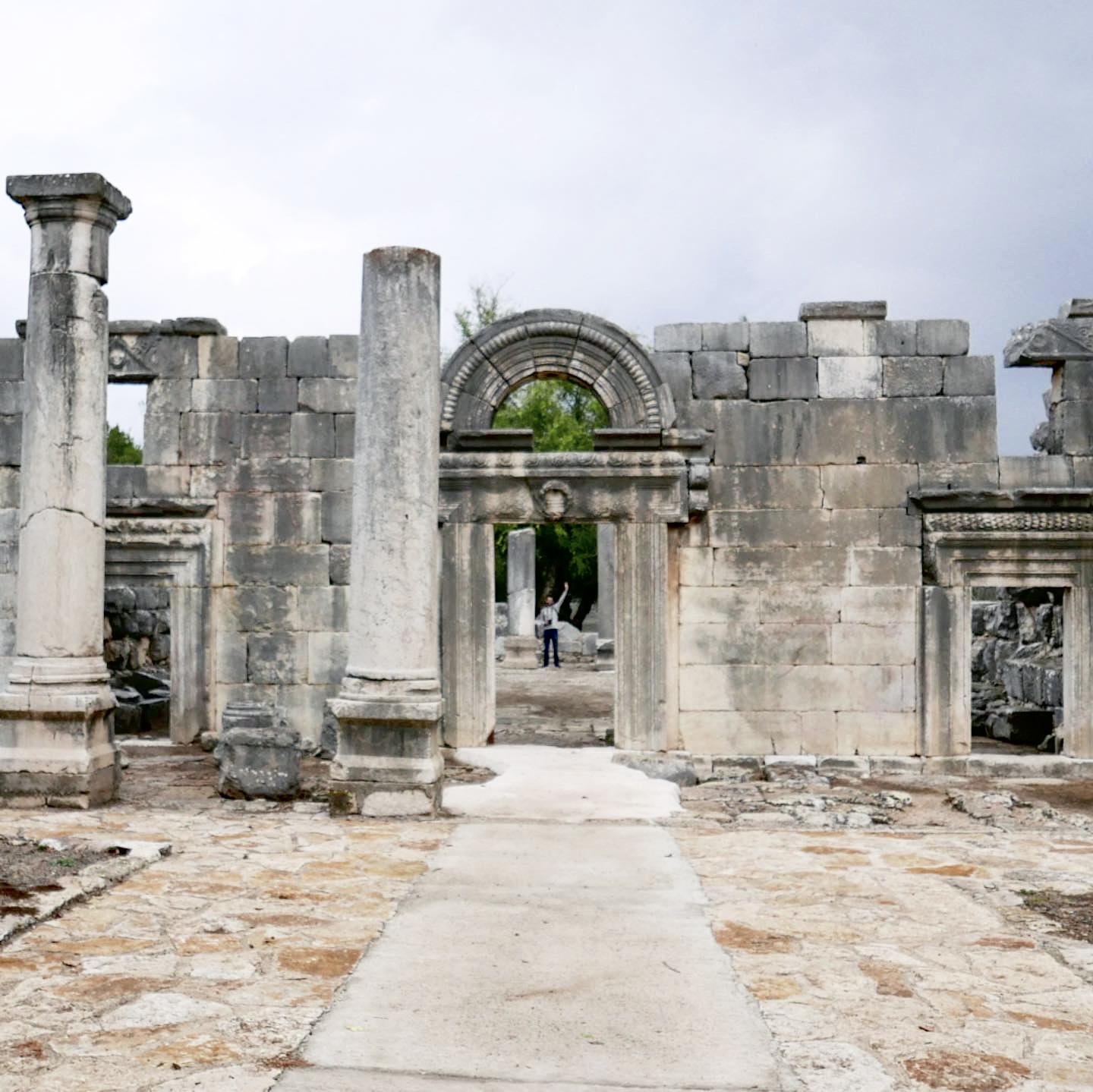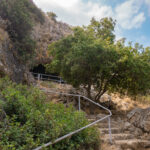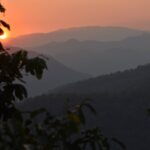It’s raining outside. Not too bad, a light rain, almost unnoticeable. I’ve been driving the car for a while now and we’re almost there. We’re going up this hill, the whole area is like that, hilly, and I hate driving like that.
We’re finally here, we paid in advance and we’re going straight into the park. It’s a beautiful forest, the views are even better. Stone stairs going even more up, lead the way to our destination, the old synagogue.
I love the rain and today is no exception. It feels like someone is welcoming us in. It almost sounds like I’m some kind of a religious fanatic but it’s not like that. I just love the rain.
There’s a little bit more walking, then between the trees a whole square has opened, and there it is.
A Little Bit Of History
In 1905, Heinrich Kohl and Carl Watzinger, both German, the first an architect and the other archaeologist, traveled to the Galilee to research ancient Jewish synagogues. On that trip they investigated the Great Synagogue in the Baram Forest.
They concluded, according to archaeological findings, that the old synagogue was built somewhere between the 4th and the 5th century but the architectural style did not fit those dates.
You see, that land in the 4th and 5th century was under Byzantine rule, and those rules forbid the building of a new synagogue.
There was a loophole that is now called Spolia. It’s an architectural term and it refers to the moving of stones and bricks from one place to the other to replicate a building or creating a new one from it.
It was done many times through the years, one famous case is the Arch Of Constantine in Rome, some of its sculptures are older then the arch itself and the assumption is that they were taken from other buildings around the Roman Empire.
In our case Spolia came in handy because while it wasn’t allowed to build new synagogues, it was okay to use the stones and structure of existing synagogues and move them to a new destination.
The assumption here is that the Great Synagogue in Baram was built with the stones of an older synagogue dating to the 2nd and 3rd centuries.
This is not the only thing special about it though, the Great Synagogue of Baram was preserved well and its beautiful ruins indicate an established Jewish community that lived in the area during those years.
Walking Around The Old Synagogue
Back to today, and the square that just opened in front of us, it was the old synagogue. I looked around, a bride and a groom were taking their wedding photos at the entrance to the synagogue.
We got closer, went down the path and toward the entrance, the arched stone frame of what used to be the door to the synagogue is full of small delicate details hinting at the greatness of the place.
To the sides and along the walls inside the old synagogue we could see many pillars, some broken, some still standing. Those pillars were once the base for the second floor of the building that no longer exists.
The outline of the synagogue was still very visible and I can almost see the rows of wooden benches organized inside the building and along the nicely colored walls for the community to come together on their holy days.
The blackened heavy stones, cracked and exposed, once were the walls of the synagogue and now a sign to the centuries that have passed since its construction.
We walk toward the back, there’s not a lot to see there but a smaller building, the other synagogue, parts of it can be seen in The Louvre in Paris. So we move on, back toward the main path.
The Surrounding Area
We walk up another set of stairs, the rain coming and going but doesn’t stop us from exploring.
To the left is a closed church, it’s obviously newer than the synagogue in the square but old nonetheless. A little further down a less walked on road, not paved or marked, are ruins of more buildings. It seems like they date to the same time as the church.
More than 70 years ago this was a village named Biram. Its residents were Maronites. A christian group native to this area and its surroundings. In 1948, because of security reasons the villagers were removed from their homes, some fled to Lebanon and others to different villages in Israel.
Since then they weren’t able to return to their lands and the village was left to ruin. The church on the other hand is still active and open on holidays and special events by the former residents.
Conclusion
We went on this trip in 2020. It was peak COVID times and because so many borders were closed or restricted, traveling around Israel was our only option. We got to see so much of the country and learn so much about the history of the place.
This article is published in January 2024. These are difficult days in Israel and Baram forest with the old synagogue in it, situated on the border with Lebanon, is currently under rocket fire risk at all times.
We obviously don’t recommend anyone going there at the moment, and if you’re not from Israel I don’t think you should come here at all during these hard times.
The reason why I chose to publish this article anyway is one for the enjoyment of the reader and two in hopes that some time soon it’ll become relevant again, hostages will be back home, war will be over, and after picking up the pieces, the country will be back on its feet again and you, back to traveling.
I think the Old Synagogue in the Baram Forest is an amazing piece of history from which a lot can be learned. The surrounding area as well, not too far from the sea of Galilee and Nazareth. And so definitely worth a visit.
If you want to learn about other day trips around Israel, like the one to the old synagogue, its history and guides check out our other articles about Israel.
For the official website of the park with up to date information check out the Baram National Park page.


